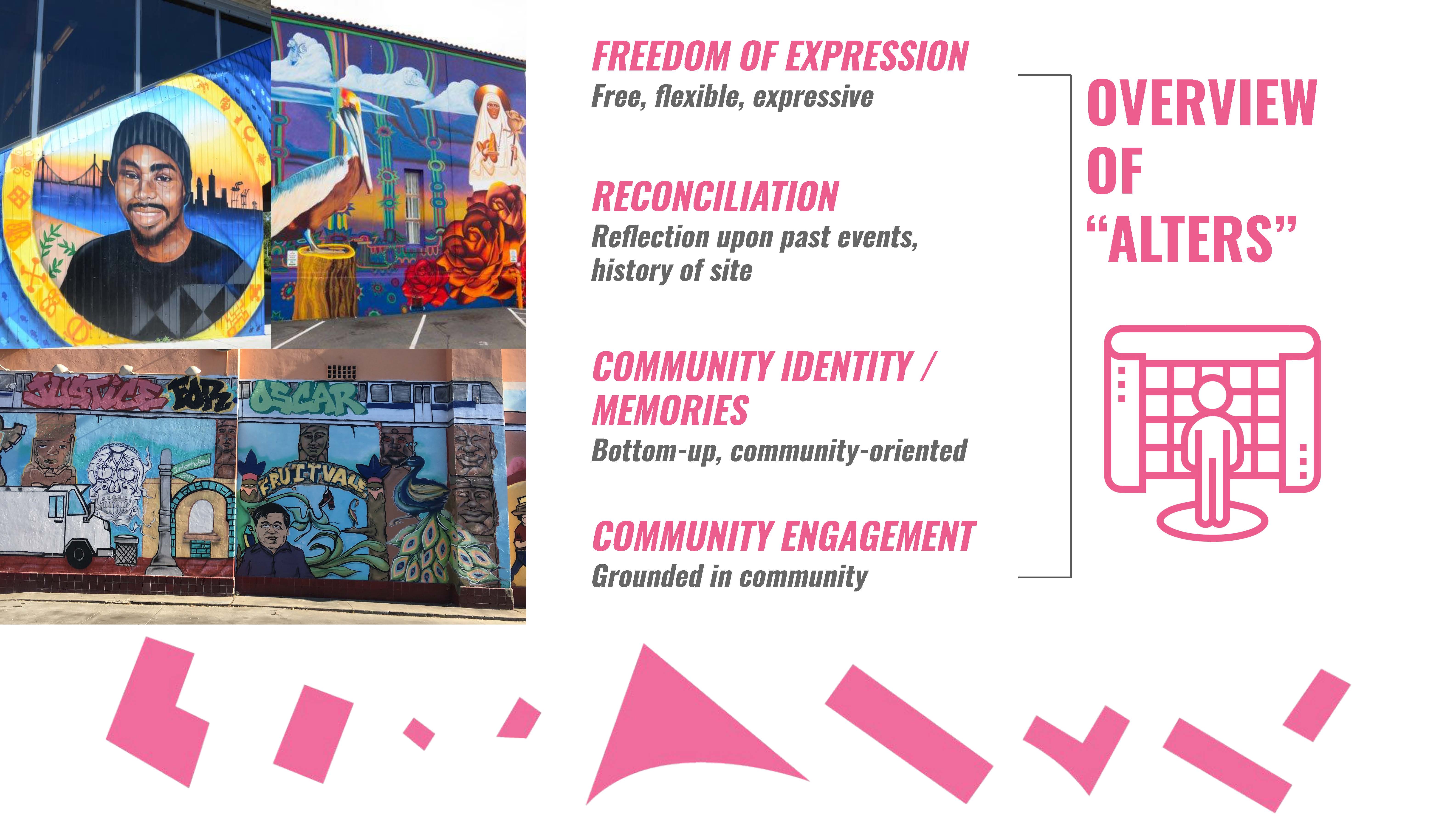
Fruitvale’s Urban Future
What
Where
When
For
With
Where
When
For
With
Affordable Housing
Oakland, CA
2019
Research Methods Course
Felicia Jiang
Vanessa Lee
Maria Alatorre
David Garcia
Oakland, CA
2019
Research Methods Course
Felicia Jiang
Vanessa Lee
Maria Alatorre
David Garcia
Our interdisciplinary group was asked to devise a design competition for the community surrounding the Fruitvale BART station, our station of choice along the Blue Line. This entailed an in-depth analysis of the dialectic that exists between the community of Fruitvale and the urban fabric itself. We made multiple visits to the area to document the urban conditions, both positive and negative. The Fruitvale BART Station is notorious as the site of Oscar Grant’s murder while apprehanded by police, triggering a wave of antiracist protests in Oakland. Conversely,
Fruitvale is also the site of Oakland’s Day of the Dead celebration, where the deceased are honored in celebration rather than grief. We attended the yearly celebration to conduct multi-lingual ethnographic research with attendees of many different backgrounds to get a better understanding of the event’s meaning to the community. In simple terms, the Day of the Dead is an effective community coping mechanism to its history of disenfranchisement and violence, and our research helped us
effectively
unpack the complicated dichotomy of Fruitvale, leading to the creation of a speculative design competition that attempts to further heal the community’s urban and social fabric.
Inspired by the Day of the Dead celebration, we outline a format for designing a new piece of pedestrian public infrastructure that uses boundaries to connect rather than divide like the BART line currently does in Fruitvale. These avenues, or “Caminos,” percolate through the urban fabric to connect disparate sites of neglect and decay, at which we call for the design of an urban “Altar.” Similar the the altars in Day of the Dead celebrations, these kiosks would offer an interface for soliciting public input for ideas and aspirations of what to do with these sites. This method helps put the community first in the design process and connects them directly with city officials and designers so that the latent potential of these sites can be more equitably and confidently realized.
Inspired by the Day of the Dead celebration, we outline a format for designing a new piece of pedestrian public infrastructure that uses boundaries to connect rather than divide like the BART line currently does in Fruitvale. These avenues, or “Caminos,” percolate through the urban fabric to connect disparate sites of neglect and decay, at which we call for the design of an urban “Altar.” Similar the the altars in Day of the Dead celebrations, these kiosks would offer an interface for soliciting public input for ideas and aspirations of what to do with these sites. This method helps put the community first in the design process and connects them directly with city officials and designers so that the latent potential of these sites can be more equitably and confidently realized.









